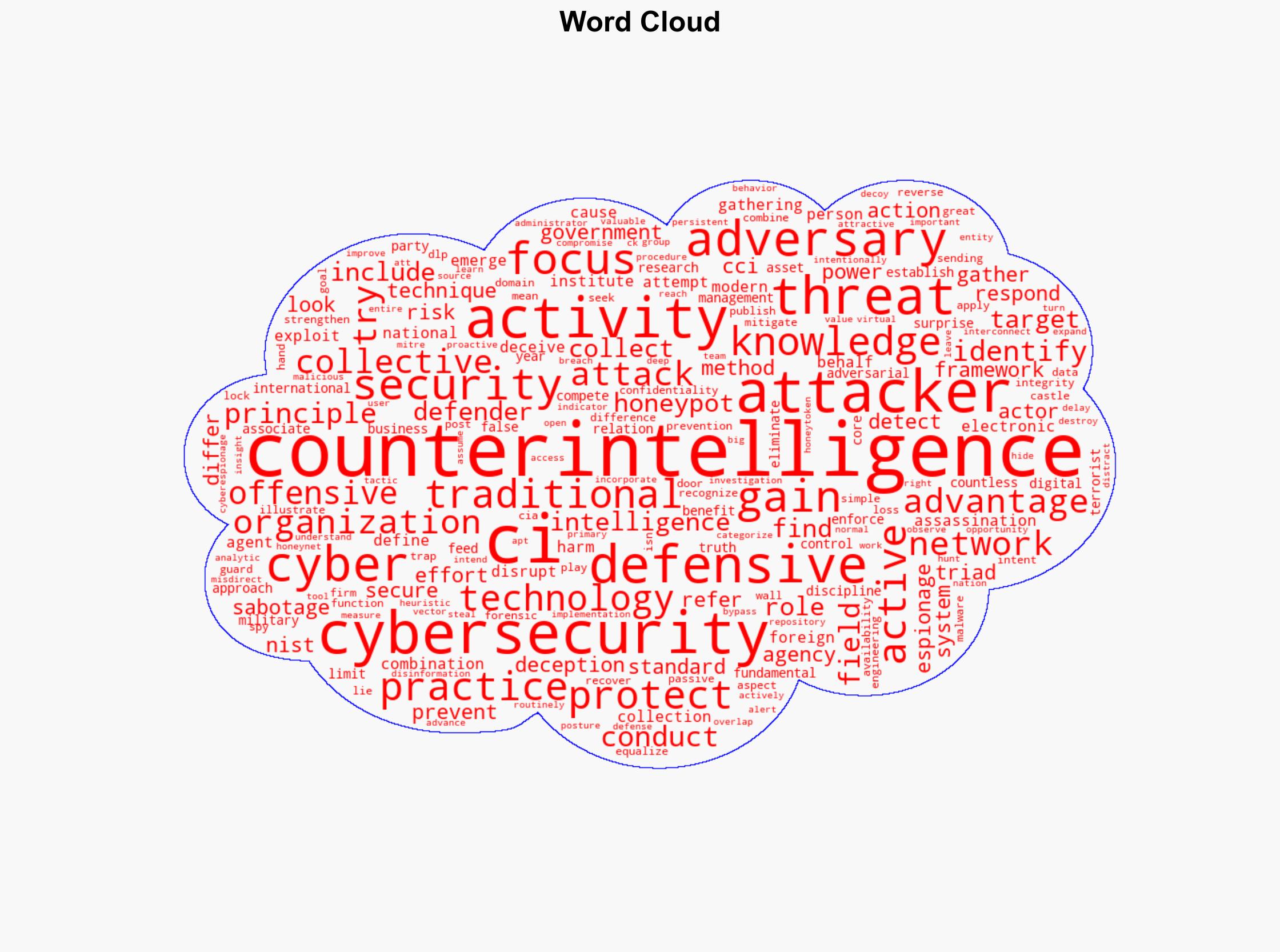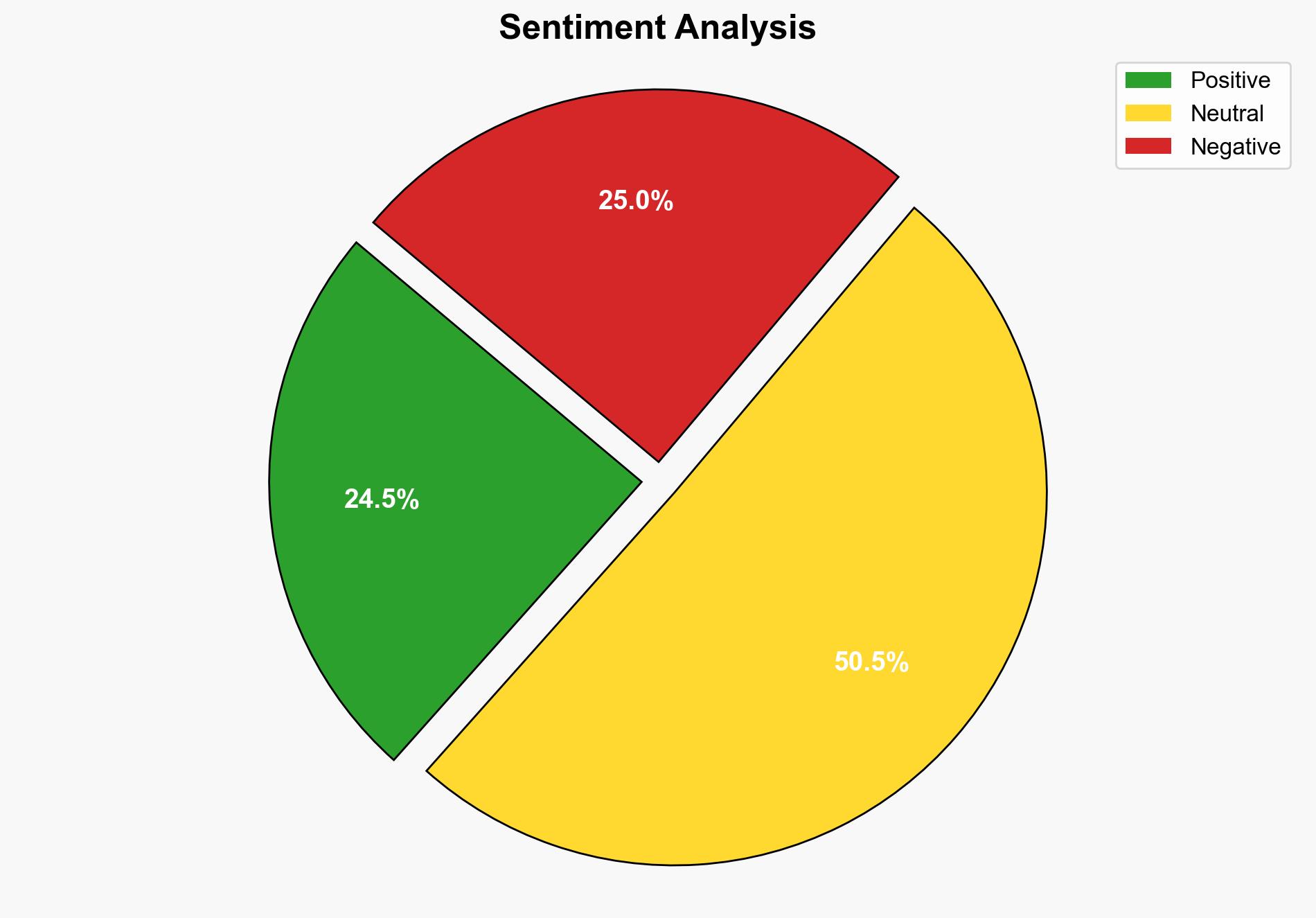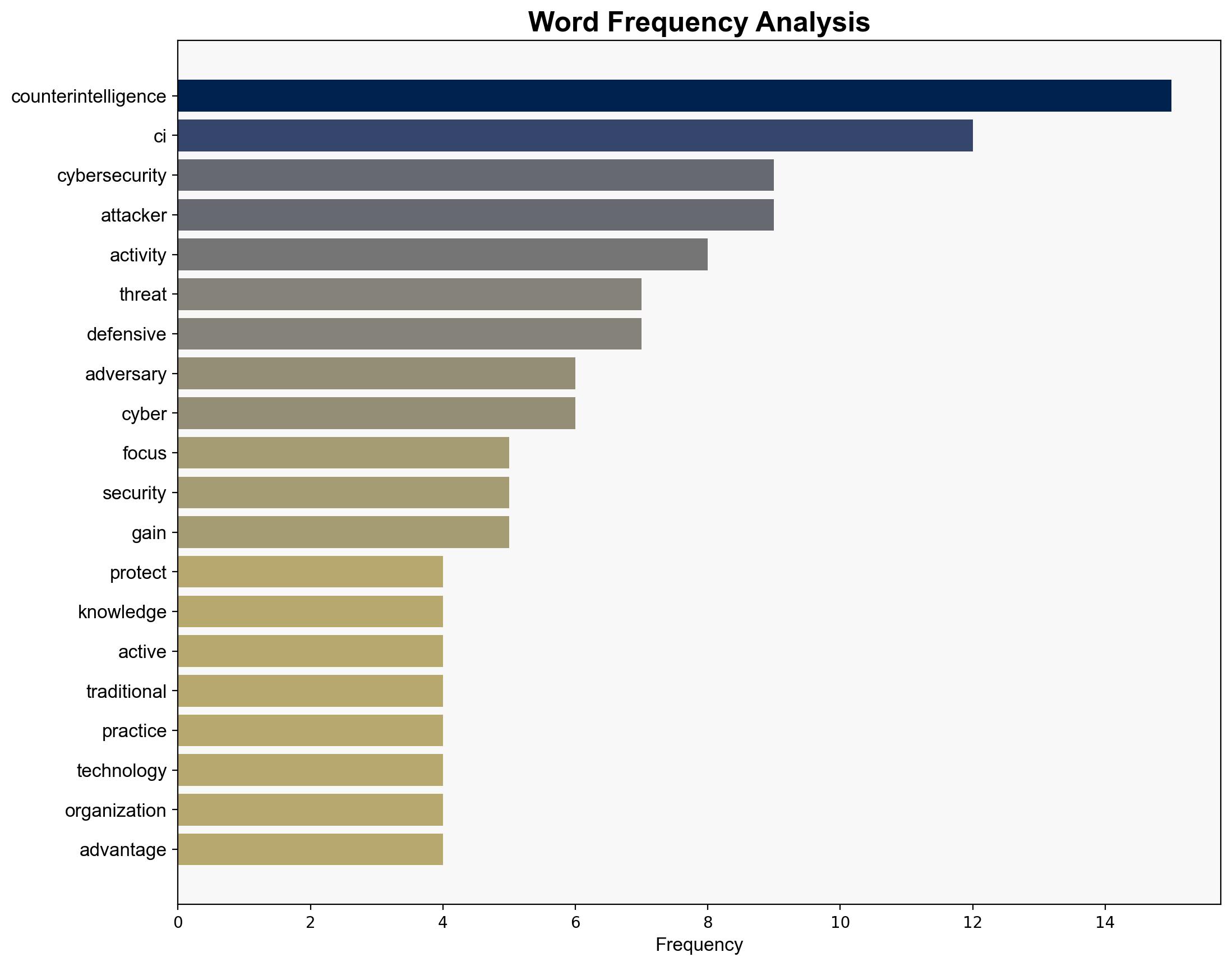What is counterintelligence – Techtarget.com
Published on: 2025-10-31
Intelligence Report: What is counterintelligence – Techtarget.com
1. BLUF (Bottom Line Up Front)
The most supported hypothesis is that counterintelligence (CI) is evolving to integrate traditional principles with modern cybersecurity practices, enhancing proactive measures against cyber threats. Confidence level: Moderate. Recommended action: Strengthen CI capabilities by incorporating advanced cybersecurity techniques and fostering collaboration between traditional intelligence and cybersecurity entities.
2. Competing Hypotheses
Hypothesis 1: Counterintelligence is primarily adapting to include cybersecurity measures, focusing on proactive threat detection and response to cyber espionage and sabotage.
Hypothesis 2: Counterintelligence remains largely traditional, with cybersecurity practices being a supplementary component rather than a core focus.
Using Analysis of Competing Hypotheses (ACH), Hypothesis 1 is better supported. The integration of cybersecurity into CI is emphasized as a necessity due to the increasing sophistication of cyber threats, as highlighted by the focus on active threat hunting and the use of advanced analytics.
3. Key Assumptions and Red Flags
Assumptions:
– Cyber threats are a primary concern for CI operations.
– Traditional CI methods are insufficient alone to counter modern cyber threats.
Red Flags:
– Lack of specific examples of successful integration of CI and cybersecurity.
– Potential bias towards emphasizing cybersecurity due to current trends.
4. Implications and Strategic Risks
The integration of cybersecurity into CI could lead to improved defense mechanisms against cyber espionage and sabotage. However, there is a risk of over-reliance on technology, potentially neglecting human intelligence aspects. Escalation scenarios include increased cyber warfare and espionage activities, potentially destabilizing geopolitical relations.
5. Recommendations and Outlook
- Enhance training programs to integrate cybersecurity skills within CI units.
- Foster partnerships between government agencies and private cybersecurity firms to leverage diverse expertise.
- Scenario Projections:
- Best Case: Seamless integration leads to robust defenses against cyber threats.
- Worst Case: Failure to integrate effectively results in increased vulnerability to cyber attacks.
- Most Likely: Gradual improvement in CI capabilities with ongoing challenges in adapting to rapid technological changes.
6. Key Individuals and Entities
No specific individuals are mentioned in the source text. Entities involved include national intelligence agencies, cybersecurity firms, and international terrorist organizations.
7. Thematic Tags
national security threats, cybersecurity, counter-terrorism, regional focus




